Horror movies tend to be thought of as hollow entertainment, but horror has a long history of addressing heavy social issues, whether directly or through symbolic or allegorical means. Perhaps the heaviest of heavy social issues is race relations — especially in the United States — but these horror/suspense movies dared to wade into those troubled waters by revolving their plots largely around black-white race relations…with widely varying results.
1. King Kong (1933)
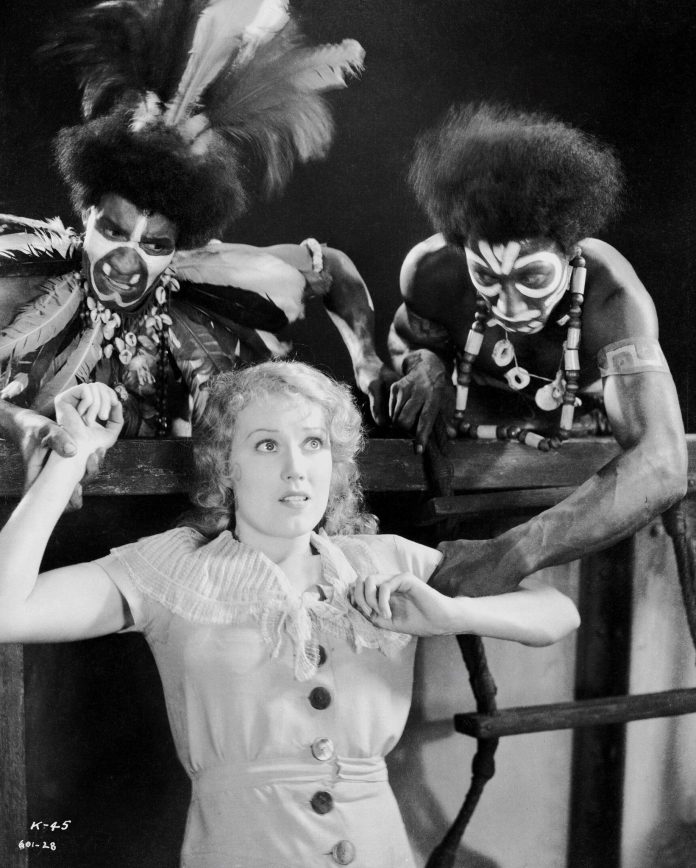
You could debate the extent to which this classic monster movie revolves around race — depending on whether you think Kong himself represents black people as a whole (the ape iconography and white woman obsession being go-to tropes for lazy racists) — but what isn’t debatable the role of the actual black people in the film: to be an example of the dangerous “wildlife” that the white explorers have to navigate on Skull Island. Even though the fictional Skull Island is somewhere around Indonesia, the default image of a “threatening native” was at that time black, reflecting racial attitudes and the burgeoning African adventure film boom spawned by 1931’s Trader Horn and 1932’s Tarzan the Ape Man. As with safari cinema, the tribesmen in King Kong (who share Kong’s fascination with white women) are just another “creature” for the white heroes to overcome. Like Kong himself, they embody the untamed wildness that fascinated Western audiences and which big-game hunters felt the need to vanquish.
2. Black Moon (1934)

King Kong’s Fay Wray stars in this film that similarly mines fear from being a white minority in the midst of a dangerous black land. In this case, it’s the Caribbean — the fictional isle of San Christopher — which can only mean one thing in a horror movie: voodoo! Since its introduction to Hollywood in 1932’s White Zombie (a film that, despite being set in Haiti, is notable for its absence of black people), voodoo has been vilified, serving to add another layer of malevolent exoticism to the portrayals of non-American black populations perpetuated in African adventure cinema. In Black Moon, like in King Kong, the islanders virtually deify a white woman, whom they “poison with voodoo” and compel into conducting human sacrifices. None of the other white people get a jungle pass, though, and when the locals mob a plantation to avenge the shooting a voodoo priest by the male “hero,” it’s hard not to read it as an evocation of the centuries-old white nightmare: a slave revolt.
3. Chloe, Love Is Calling You (AKA Voodoo Devil Drums) (1934)
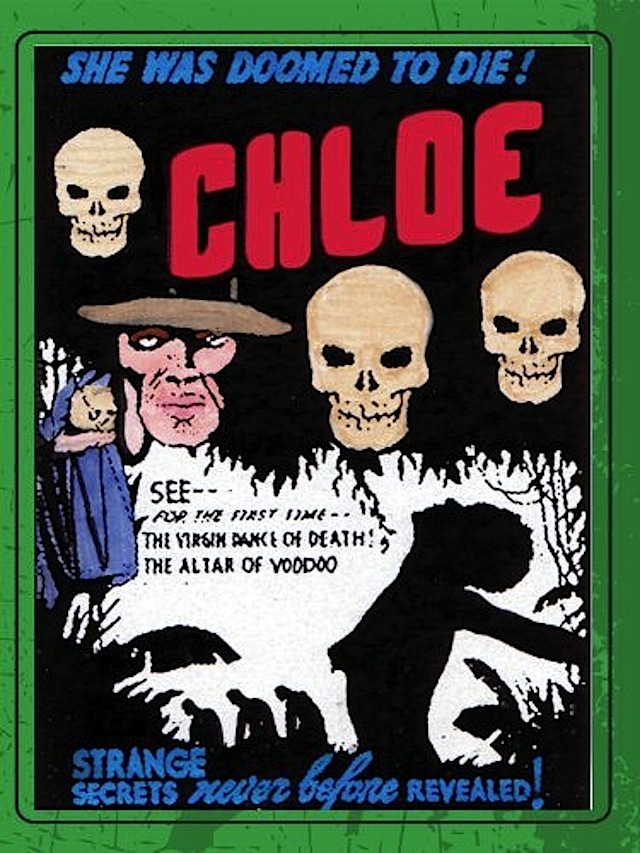
This hate crime masquerading as a melodrama tackles issues of race relations, racial identity and “passing” as crudely as you’d expect during an era in which segregation and blackface were still deemed acceptable. In it, Chloe, a young light-skinned black woman who wishes she were white — even before falling in love with a white man named Wade — discovers that she in fact IS white and was kidnapped as a baby by the woman she thought was her mother. Her black mammy, however, isn’t about to let her go and decides to sacrifice her in a voodoo ritual instead. Wade, of course, saves the day. The only positive black role, Jim — who pines for Chloe and not only saves her life by wrestling an alligator, but also saves Wade’s life TWICE — is shot and submerged in a swamp for his efforts. Bonus: Jim is played by a white actor.
4. Ouanga (AKA The Love Wanga AKA Drums of the Jungle) (1936)
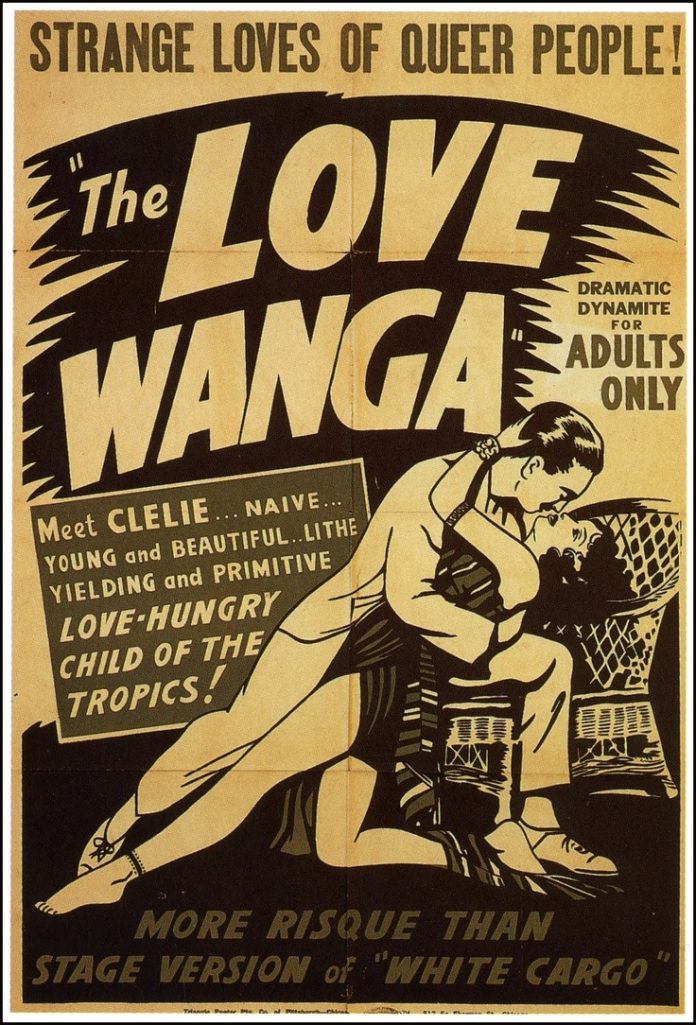
Fredi Washington, who played a “tragic mulatto” in 1934’s Imitation of Life, is infinitely more tragic as black plantation owner Clelie in this sensationalistic film whose tagline paints her as a “love-hungry child of the tropics.” As with Chloe, Love Is Calling You, Clelie is a black woman who falls in love with a white man, but unlike Chloe, she’s actually black. THE HORROR. When he’s had his fill of jungle fever, though, he drops her like a sack of racist potatoes, saying “You belong with your kind.” Being Haitian, she resorts to voodoo, but not to make him fall in love with her — as a rational, not-crazy person would do. No, she decides to raise zombies to kidnap his white fiancee for a human sacrifice. Ultimately, her reign of terror is halted by a “black” (READ: TOTALLY WHITE) man.
5. I Walked with a Zombie (1943)
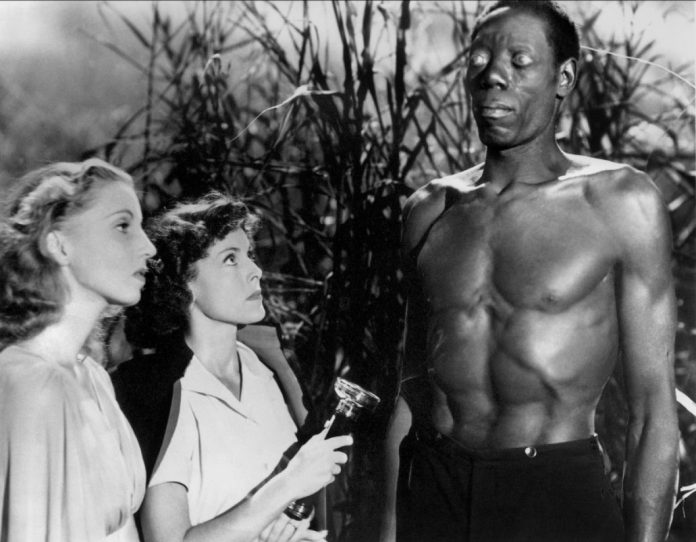
Following the nightmarish black roles of the 1930s, this classic Val Lewton production is a welcome respite of RELATIVELY restrained characterizations of Caribbean voodoo practitioners. They’re not mindless animals seeking to harm the white plantation owners. When they go after the white woman (because, you know, there always has to be one), it’s not for nefarious reasons; it’s to help her (or at least put her out of her misery), because she’s already been turned into a zombie — by another white woman, no less. Granted, their gofer is a towering, bug-eyed, dark-skinned zombie, so the optics of him lurching after a helpless white lady aren’t ideal unless you’re a D.W. Griffith purist.
6. Curse of the Voodoo (AKA Curse of Simba) (1965)
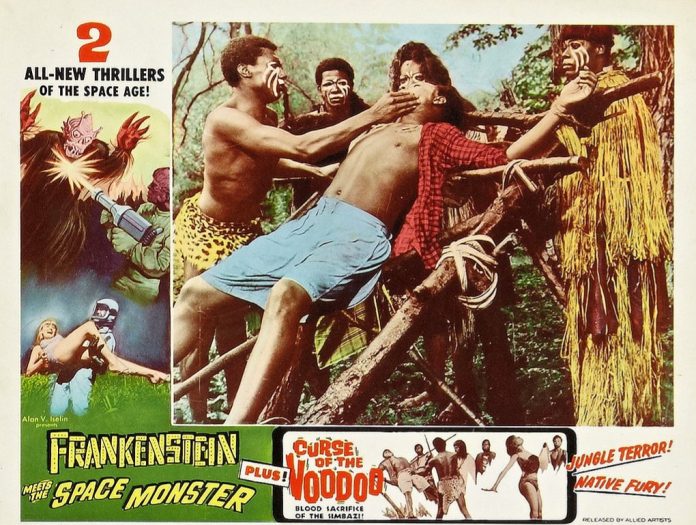
Have you ever asked yourself, “What’s the opposite of Black Lives Matter?” Well, allow me to introduce you to Curse of the Voodoo. This offensive relic was released in the midst of the decolonization of Africa, but its jarring prejudice and cultural enmity remains entrenched in the us-versus-them colonial mindset, as evidenced by an opening voiceover declaring: “Africa: where primitive people still practice evil religions which weave a dark web of death around all who sin against their gods!” In the story, Mike, a brash white American hunter on safari in Africa, ignores warnings from his African guide and fellow hunters and proceeds to kill a lion that a local tribe worships as a god. A tribesman curses him, and upon returning to the US, he experiences frightening hallucinations (like Jacob’s Ladder, but not). He realizes that to break the hex, he must return to Africa and hunt and kill the tribesman who cursed him…which he does. The end?
7. Africa Addio (AKA Africa Blood and Guts) (1966)
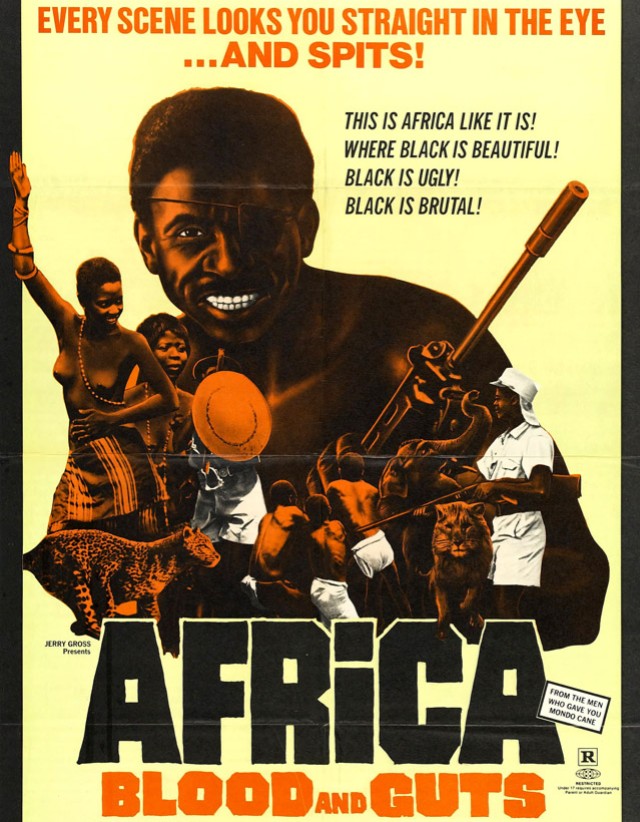
This is one of the most repugnant of the “mondo” shockumentaries that became popular in the ’60s with sensationalistic portrayals of foreign cultures feeding on the xenophobia of Western audiences (see also Brutes and Savages, Shocking Asia, Kwaheri: Vanishing Africa and more). As the title implies, this one focuses on Africa during the decolonization process, presenting it (with a dangerous level of purported authority and objectivity not unlike some cable news networks today) as a continent with little to offer other than violence and death, including ethnic strife, genocide, animal slaughter and plain old nature being nature. Just as shocking, the film seems to see nothing wrong with colonization and in fact, blames the African countries for any ills they suffer during the independence process. “Europe,” a voiceover reads, “The continent that nursed Africa, can no longer manage this big black baby that grew too quickly, keeps bad company and what’s more, hates it because of its white skin.”
8. Night of the Living Dead (1968)
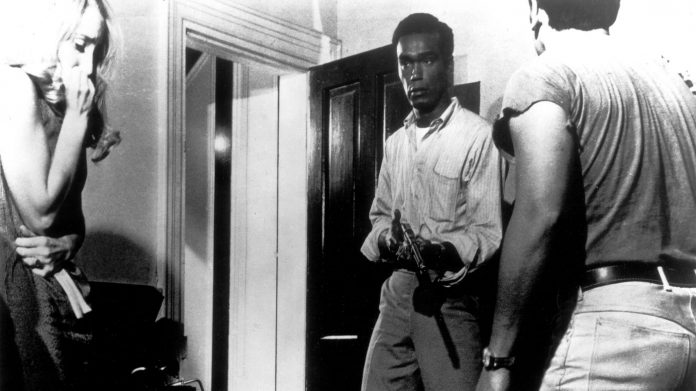
George Romeo didn’t intend for his zombie classic to have racial overtones, since the lead character of Ben wasn’t written as black. But when Romero cast Duane Jones in the role — one in which he takes control of a group of white survivors in a zombie outbreak, physically overpowering a man who opposes him and slapping some sense into a hysterical woman — it made a statement on race relations whether Romero wanted to or not. The nihilism and carnage, on the other hand, was indeed intended as a reflection of the social injustice and violence of the era, from the Vietnam War to political assassinations to lynchings — the latter two of which the film’s final scenes eerily echo.
9. The Thing with Two Heads (1972)
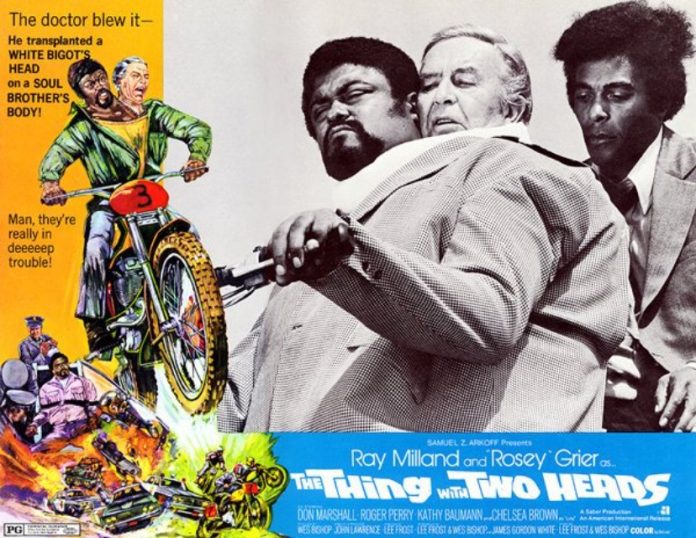
This gimmicky horror-comedy is light on horror, with the silly Frankenstein-inspired concept of a dying old racist man who demands his head be transplanted onto a healthy body — only to find his head attached to the body of a burly black convict (*sad trombone*). If that’s not bad enough, the convict’s head is also still attached, leading to a constant dialogue between the two heads about race that amounts to little more than a clichéd standup act about “Did you ever notice that white people do this, and black people do that?”
10. Old Dracula (AKA Vampira) (1974)
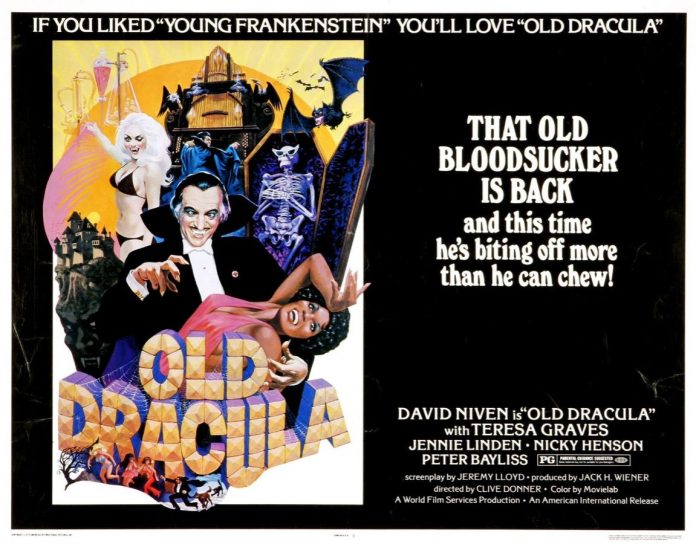
Like The Thing with Two Heads, this corny vampire film revolves around a wacky medical mix-up with racial implications, further establishing — thanks to a lead from TV show All in the Family — that race relations in this increasingly open and frank decade had become fodder for comedy. The movie stars a slumming David Niven as Dracula, who, in an attempt to revive his long-dead lover Vampira, accidentally injects her with a black Playmate’s DNA, turning her into Get Christie Love’s Teresa Graves. Let the hilarity — and the use of phrases like “right on,” “out of sight” and “jive turkey” — begin.
11. The Zebra Killer (AKA The Get-Man AKA Combat Cops AKA Panic City) (1974)
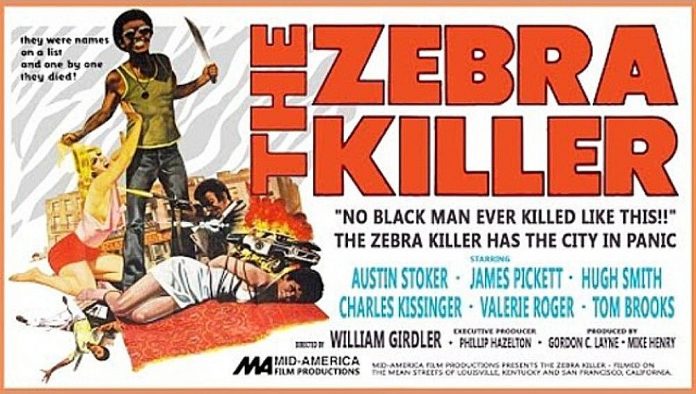
This little-seen thriller has an intriguing, unique concept: a racist serial killer feeding off the stereotype of black men as criminals by disguising himself as black while committing his violent acts. Apparently, all it takes is shoe polish and an afro wig to baffle the Louisville Police Department. Not so funny is the possibility that the film’s title may have been an attempt to capitalize on the so-called “Zebra Murders” — a seven-month, racially motivated killing spree by a group of black militants — that plagued San Francisco until just weeks before the movie’s release.
12. Poor Pretty Eddie (AKA Black Vengeance AKA Redneck County) (1975)
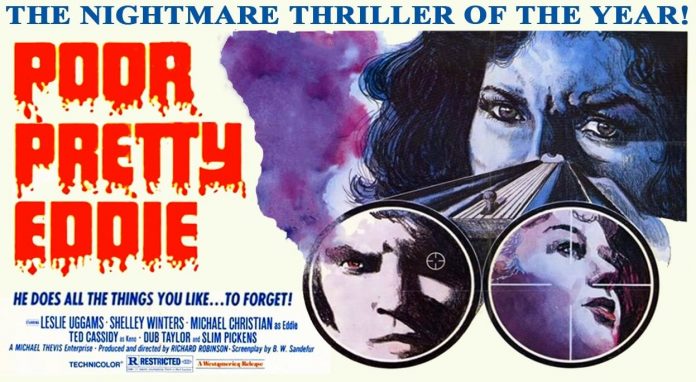
No one does sleaze like the 1970s. No exploitation stone goes unturned in this film starring Leslie Uggams as a famous singer who’s apparently never seen a horror movie, because she decides to take a drive through the backroads of the rural South, only to have her car break down (duh). She’s taken in by a deranged fan who ends up holding her captive — like Misery with a lot more rape — and whenever she finds someone she thinks can help her escape, they turn out to be raving racists who bombard her with slurs and cringey victim shaming that plays up the stereotypes of black hypersexuality. Is there vengeance? Sure. Is it worth enduring what leads up to it? Only if you’re a masochist.
13. Soul Vengeance (AKA Welcome Home Brother Charles) (1975)
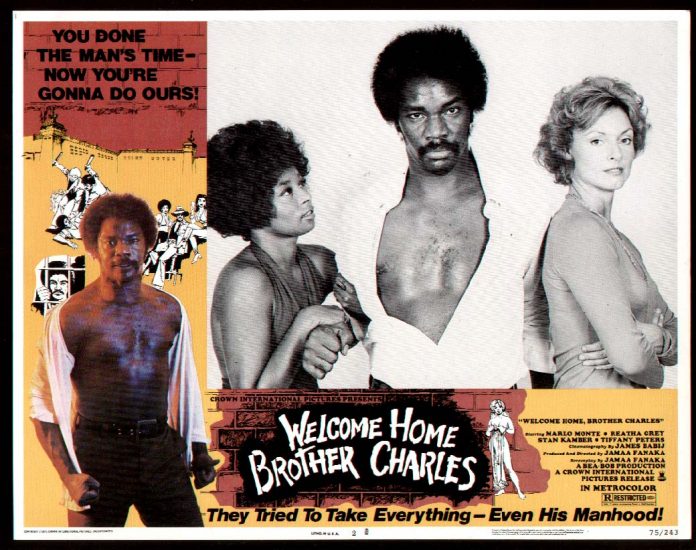
This revenge thriller isn’t a great film, but what makes it must-see cinema can be summed up in two words: KILLER PENIS. That’s right; when a black man is framed and abused by a racist cop who gets him sent to jail for three years, he emerges from the pen with the inexplicable ability to grow his wang several feet long. (I guess that’s useful in prison?) Ignoring the obvious avenues for such a talent — porno movies, carnival sideshows, Kardashian husbandry — he uses his newfound appendage to strangle the racists in the police department and judicial system who did him wrong…but not before seducing their wives.
14. Dr. Black, Mr Hyde (AKA The Watts Monster) (1976)
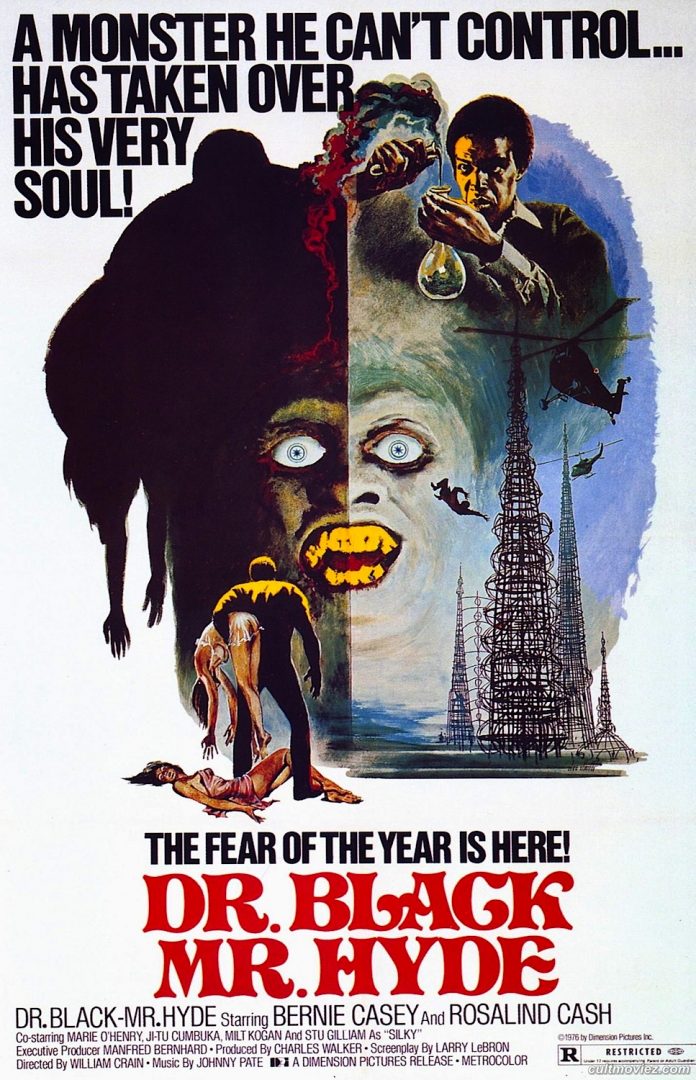
Despite the campy title, this is a serious-minded “Blaxploitation” film brimming with social consciousness and allegorical content. It stars Bernie Casey as the not-so-subtly named Dr. Pride, a black physician serving the downtrodden Watts neighborhood of Los Angeles just a decade after the infamous Watts Riots/Rebellion. When he injects himself with an experimental cell regeneration serum, he transforms into…A WHITE MAN…well, at the very least, a white-skinned creature (think The Hulk by way of The Omega Man) who goes on a violent rampage through the community until he’s gunned down by police while making a King Kong-like dash up the Watts Towers. WARNING: SYMBOLISM OVERLOAD.
15. Fight for Your Life (1977)
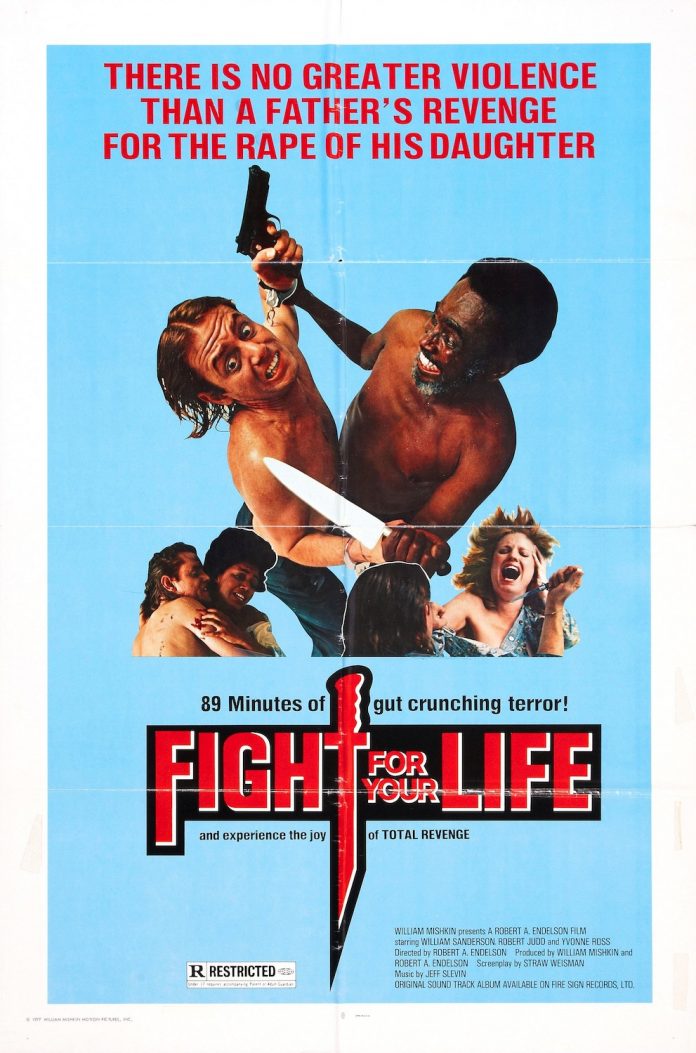
In the vein of ’70s revenge horror flicks like I Spit on Your Grave and The Last House on the Left, this well-made but unsavory slice of vengeance revolves around victims who turn the tables on captors who tormented them — in this case a black preacher whose family is held hostage by three escaped prisoners. Given that the trio’s leader is a racist white man with a penchant for epithets, there’s a racial element in this film that’s missing from the more well-known Spit and Last House. Interestingly, though, the other two convicts are Latino and Asian — equal opportunity stereotypes, as it were.
16. White Dog (1982)
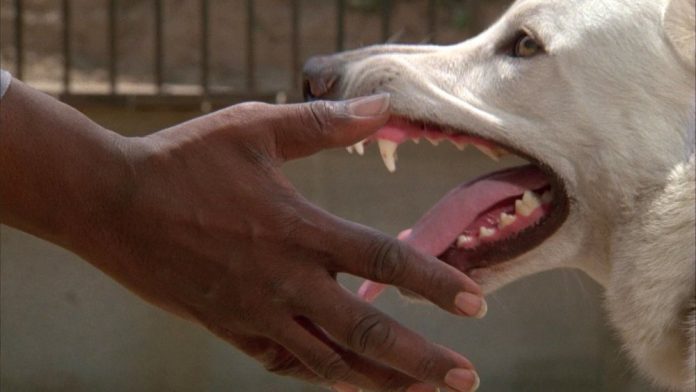
As much drama as horror, this is one of the few genre-slanted movies of the slasher-heavy ’80s to deal with heavy social issues like race — representative of the blindly happy-go-lucky nature of the decade in general. Its allegorical plot features Kristy McNichol as a young woman who discovers that her newly adopted dog had previously been trained to attack black people. And ironically enough, only a black man (Paul Winfield) can break it. I guess dogs aren’t color blind after all.
17. Black Demons (1991)
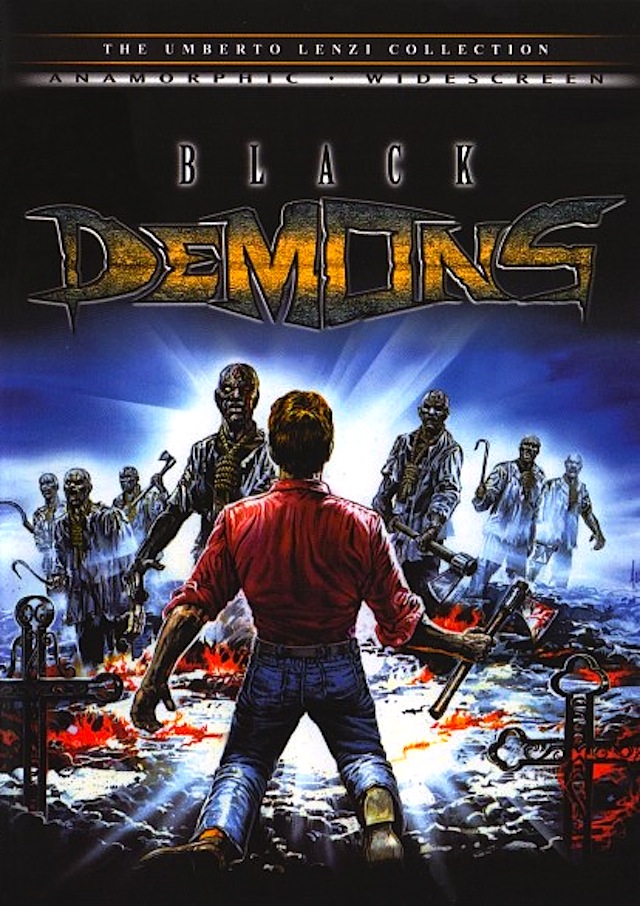
The name of this cheesy Italian movie is a misnomer, since there are no demons in it whatsoever. The titular baddies are actually — you guessed it — zombies, conjured by — you guessed it — voodoo. They’re surprisingly well-preserved (and well armed!) 100-year-old corpses of murdered slaves in Brazil who target a trio of white tourists in order to avenge their own deaths at the hands of white people a century earlier. Given the choice between murderous zombie slaves and American tourists, it’s hard to tell who the villain is supposed to be.
18. Curse III: Blood Sacrifice (AKA Panga) (1991)
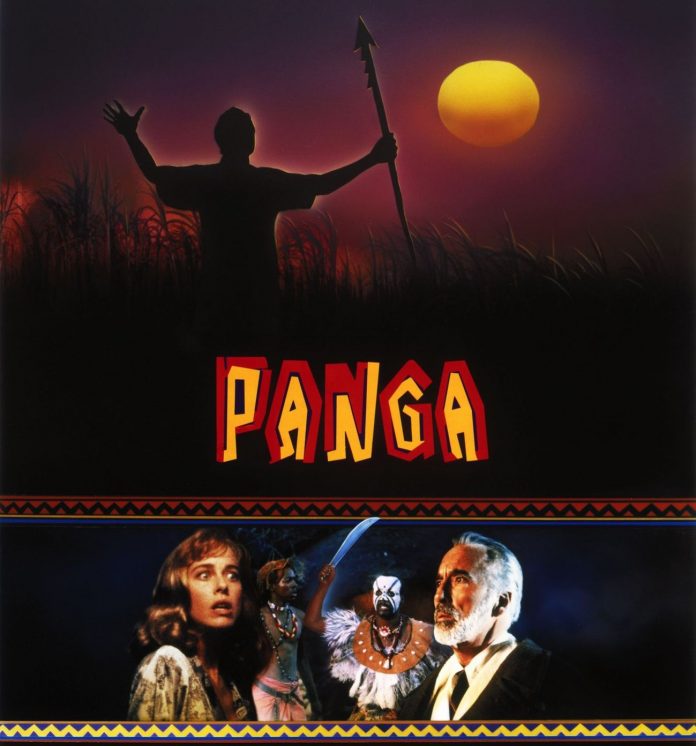
Unrelated to the first two films in the franchise, Curse III is set in 1950 Africa and stars Three’s Company‘s Jenilee Harrison as an E.W.A. (Entitled White American) who interrupts a goat-sacrificing ritual by locals because, darnit, goats are people too! When she nabs the animal, she incurs the wrath of a witch doctor, who curses her to become a crummy actress — and guess what? It works! He also sics a sea monster on her, so there’s that too.
19. The People Under the Stairs (1991)
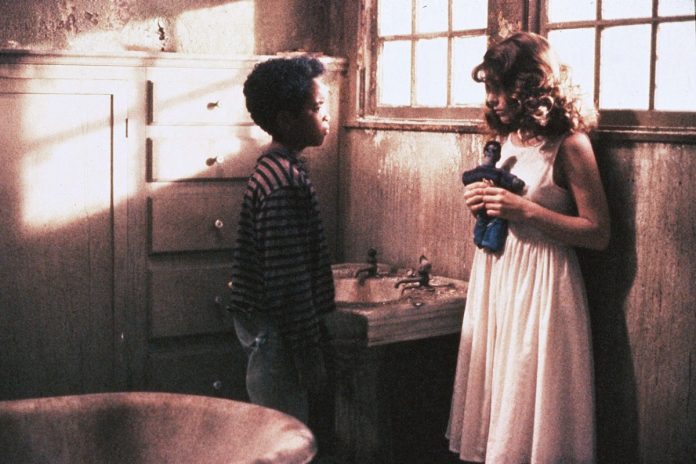
Following Ronald Reagan’s two-term presidency in the ’80s, Wes Craven unleashed this gleefully dark fairy tale that satirized Reagan and Bush-era politics that prioritized the wealthy and white over the poor and black. It revolves around a couple of white suburban slum lords (who call each other “Mommy” and “Daddy”) who profit from exploiting minority urban tenants and live a life of EXTREME family values despite a love of kidnapping and murder. Needless to say, they’re none too happy when a young, black would-be thief breaks into their home and befriends their pristine white daughter.
20. Candyman (1992)
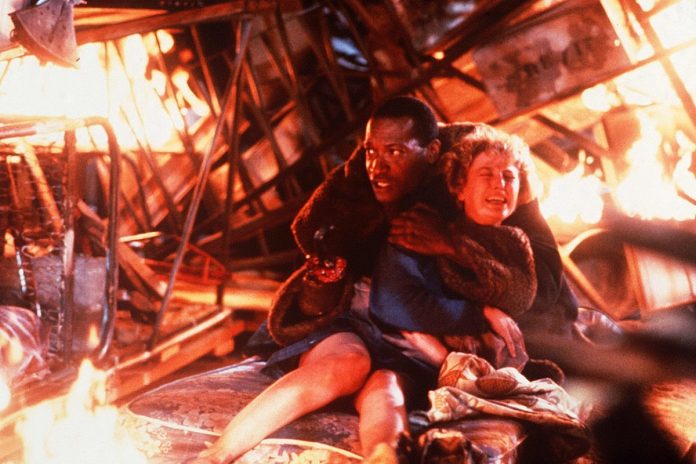
Candyman‘s racial commentary deftly ranges from slavery and century-old violence to modern socioeconomics and de facto segregation, albeit through the eyes of a white female protagonist. Helen is a college student writing a paper on the urban legend of the Candyman, the ghost of a free black man who was lynched in the 1800s for having consensual sex with a white woman. Much to her chagrin, Candyman turns out to be quite real, and much to the audience’s chagrin, he hasn’t lost his taste for white women. Man, didn’t you learn from the first time?!?
21. Tales from the Hood (1995)
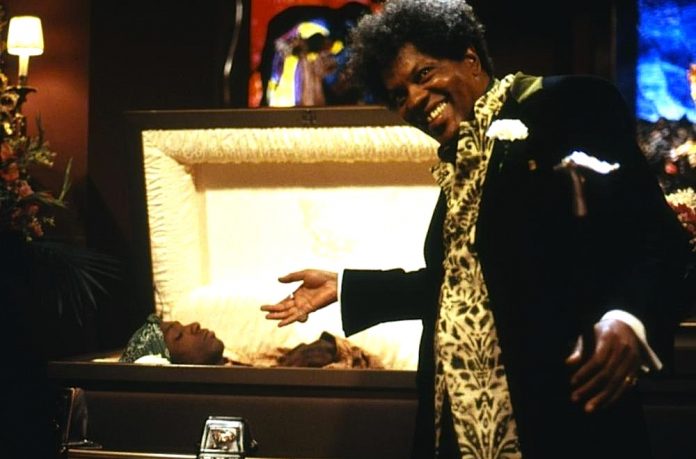
This well-made, conscious-minded horror anthology mirrors newsworthy racial events of its day, including the Rodney King beating (a police brutality story in which the victim returns from the grave to wreak revenge) and former KKK Grand Wizard David Duke’s run for office (an ex-Klan member and current gubernatorial candidate runs afoul of dolls possessed by the souls of slaves). Sadly, decades later, those issues still exist, from police-involved deaths to politicians with racist agendas like voter manipulation and redlining.
22. The Ghost and the Darkness (1996)
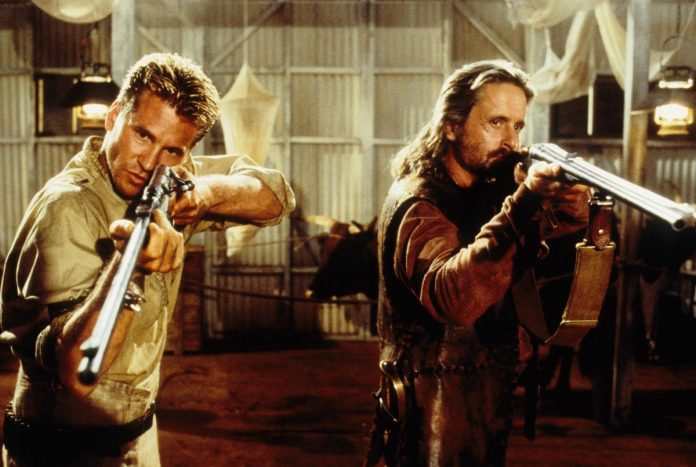
Unlike Curse of the Voodoo, this rousing killer animal flick set in colonial Africa paints the locals as sympathetic and, depending on your interpretation, may even imply that the European colonization and forced industrialization of the continent — embodied in the film by a railroad under construction — brought about the ills it faced upon decolonization — embodied by the man-eating lions attacking the railway workers.
23. Female Slaves Revenge (AKA Apartheid Slave Women’s Justice) (1997)

Further proving that nothing is sacred, Z-grade filmmaker Ted V. Mikels (The Astro-Zombies, The Corpse Grinders) somehow took the death of Apartheid and turned it into a horror movie that involves a group of female African servants who, when the ruling white minority is overthrown, take revenge on their abusive boss (played by Mikels) by stomping on him with their high heels. It soon becomes excruciatingly apparent that it’s all an excuse for a shirtless Mikels to live out his “trampling” fetish. Shudder.
24. Beloved (1998)
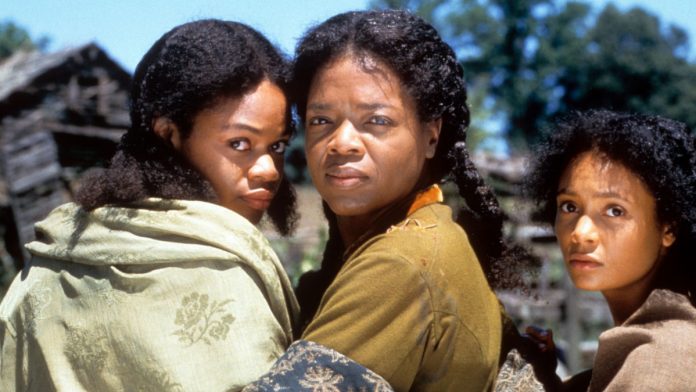
When it comes to race relations in the U.S., it all funnels down from slavery, and few films capture the horrors of that institution like this ghost story based on Toni Morrison’s Pulitzer Prize-winning novel. Oprah Winfrey, who bought the rights to the book, stars as a former slave in post-Civil War Ohio who’s literally haunted by the unthinkable torment she experienced — a poltergeist that personifies the cruel legacy of slavery.
25. Kracker Jack’d (2003)
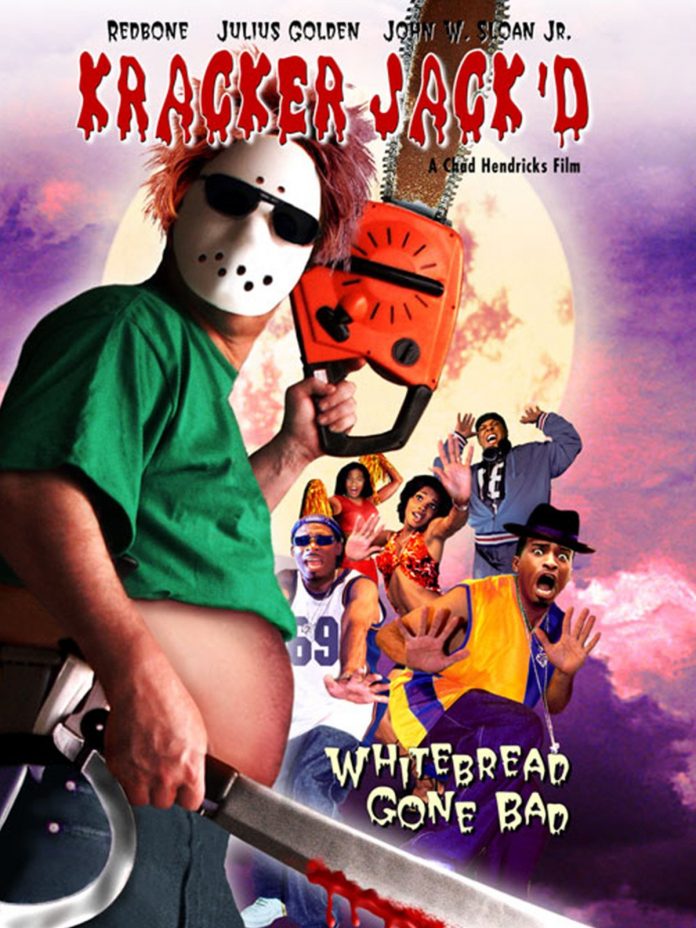
As hip-hop culture became increasingly mainstream in the early 21st century, among its worst offshoots was Kracker Jack’d, a slasher comedy about a group of black college students who are stalked by a masked killer after they beat up a white student who, in an overly eager attempt to be down with them, dropped the “N-word.” There’s a moral in there somewhere, but you probably won’t be able to sit through the whole thing to figure it out.
26. Urban Nightmare (2003)
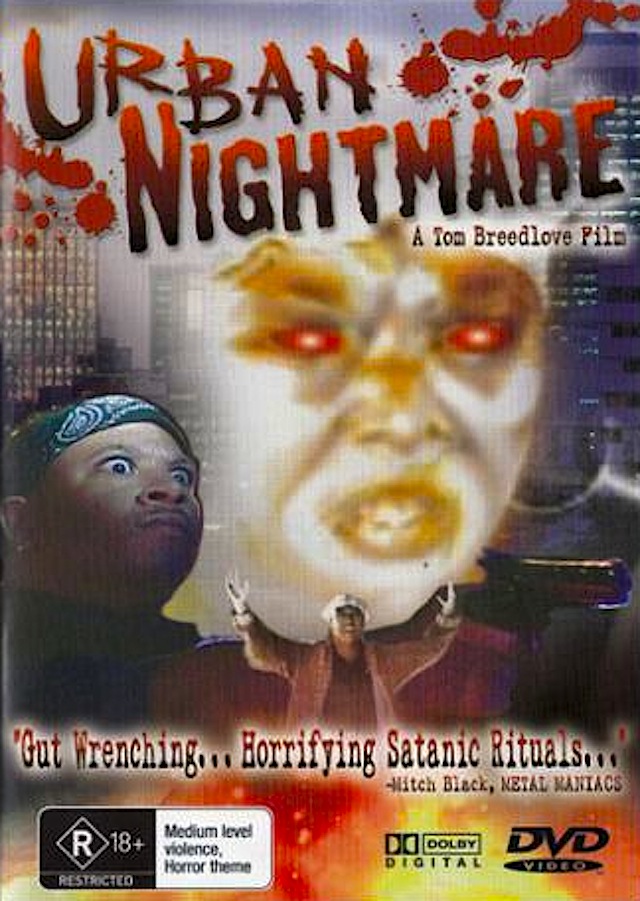
If Fox News made a documentary about the relationship between police and the black community, it might play out something like Urban Nightmare, a bottom-of-the-barrel film in terms of both racial sensitivity and production value, in which all black people are up to no good and cops can do no wrong. Specifically, a bandana-wearing black gang kills a white cop so they can use the “courageous and righteous soul of a police officer” in a voodoo ceremony. The cop returns from the dead, however, to exact violent revenge with his billy club and department-issued mustache.
27. White Skin (AKA Cannibal) (2004)
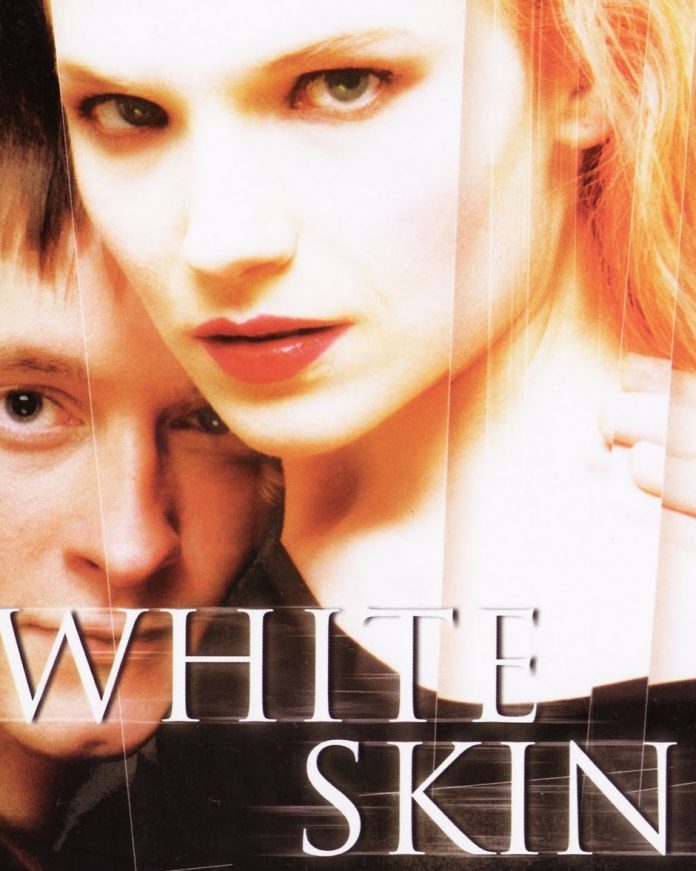
This unsung Canadian film, inaccurately renamed Cannibal for its US release, presents a thought-provoking spin on vampire lore in which pale-skinned vampires (or succubi) are drawn to feed on people with darker skin — perhaps due to some biological deficiency. Whatever the reason, it certainly makes them come off as a bit racist.
28. The Skeleton Key (2005)
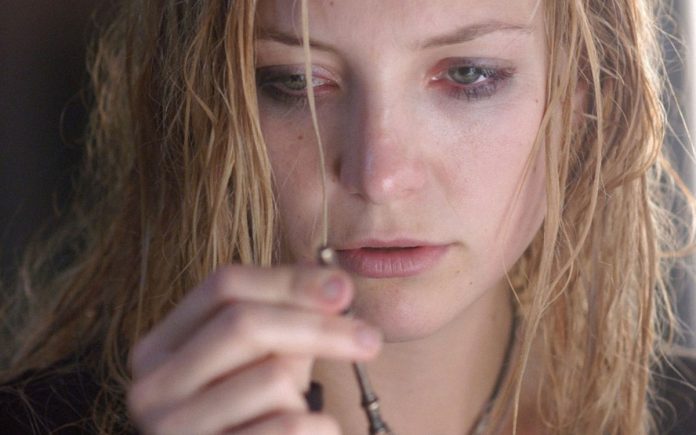
This ghost story tackles the topic of lynchings, as a young white woman (Kate Hudson) hired as a caretaker for an invalid in a Louisiana plantation begins to suspect that the spirits of two black servants who were victims of a 1920s lynching are haunting the old home. A delightfully dark twist ending takes the racial implications to a whole other level.
29. Lakeview Terrace (2008)
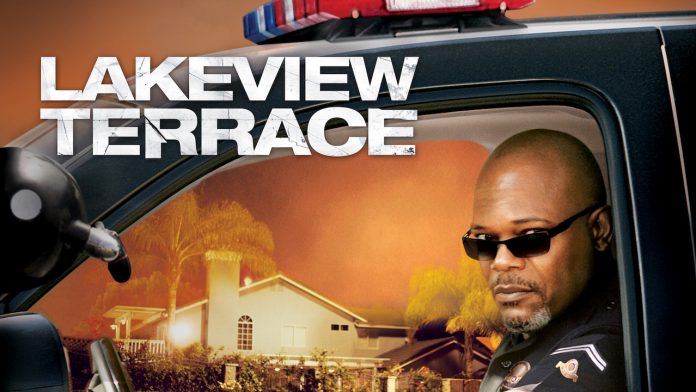
This thriller reminds us that, hey, black people can be prejudiced too. Samuel L. Jackson, Hollywood’s go-to embodiment of blackness, stars as a Los Angeles policeman who doesn’t approve of interracial relationships — at least, with a black woman and a white man; I’d have to check his browser history to see how he feels about the other way around. Unfortunately for him, the newlywed couple who moves in next door is Kerry Washington and Patrick Wilson, so he embarks on a reign of terror in an effort to drive them out. Instead of Fatal Attraction, think of it as Fatal Repulsion.
30. Cherry Tree Lane (2013)
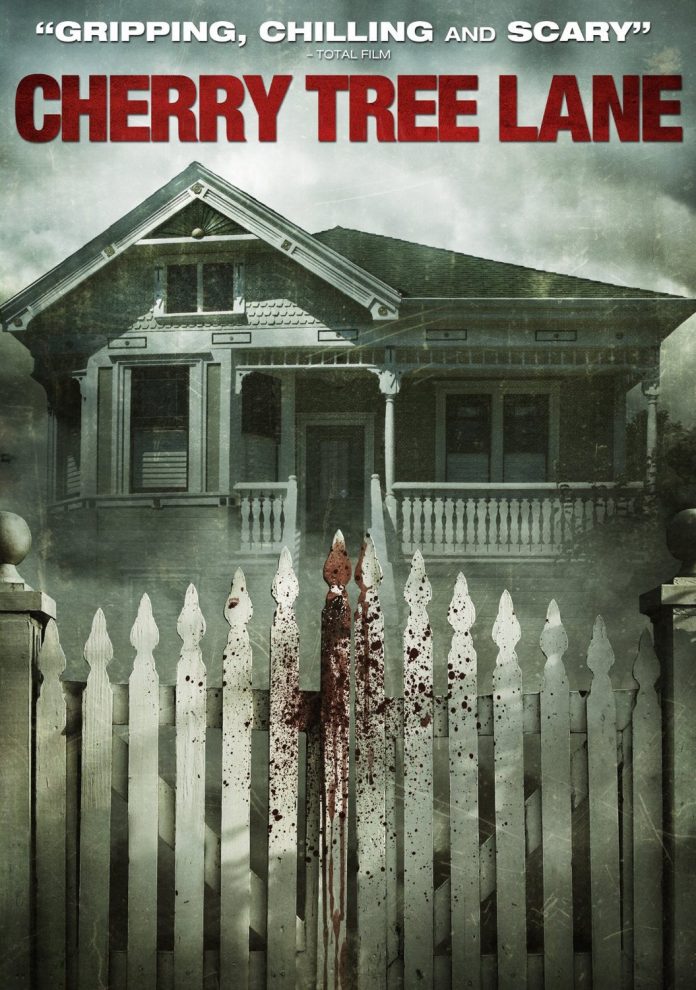
This British “hoodie horror” flick feels like little more than race-baiting sensationalism designed to scare middle-class white people into buying security systems and forbidding their daughters from dating outside their race. In it, a middle-aged white couple is held captive and tormented by a group of irredeemable, no-good adolescents, led by a pair of black kids. Think Funny Games for the Alt-Right crowd.
31. The Purge Franchise (2013-2018)
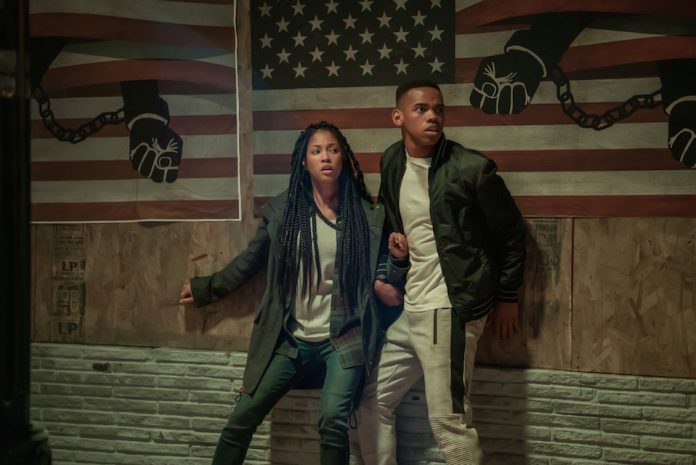
The original Purge — a home-invasion thriller about a suburban family under siege from a group of masked murderers on the night of the annual Purge, a 12-hour period in which all crime is legal — hints at racial implications, since the group is essentially an all-white lynch mob pursuing a black man taking shelter in the family’s home. However, each subsequent film in the series has been increasingly militant and explicit in the fact that the Purge is very much a race thing, as well as a class thing, with the lily-white New Founding Fathers of America organizing the annual ritual to thin out the poorer, largely minority classes who can’t afford to barricade themselves in mansions with high-tech security systems. Beyond that, the government actually employs mercenaries — including white nationalists and straight-up Klan members — to augment the mayhem.
The Purge review
The Purge: Anarchy review
The Purge: Election Year review
The First Purge review
32. Honky Holocaust (2014)
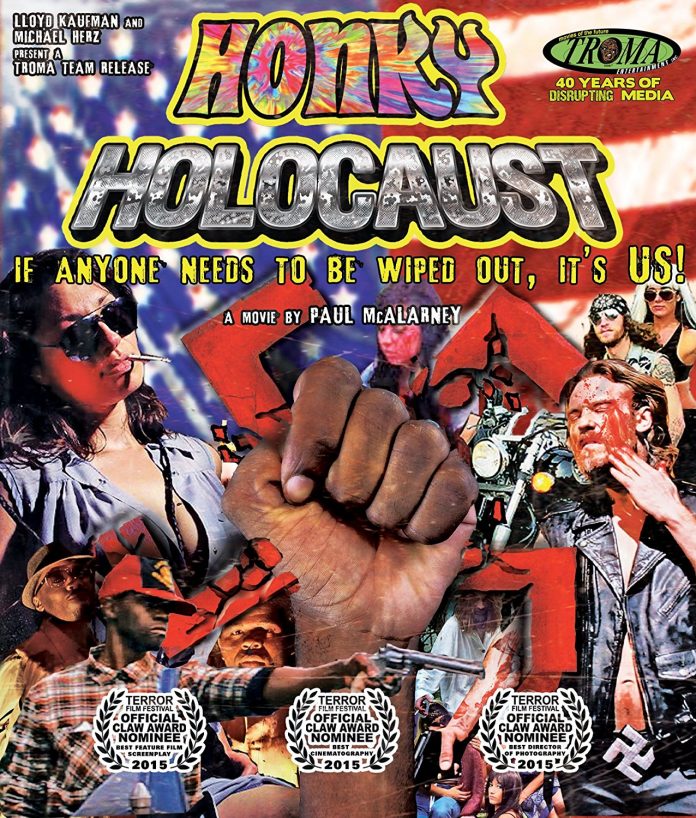
In this tasteless Troma horror-comedy, Charles Manson’s prediction of a race war comes to fruition, but when his followers emerge from their underground bunker years later, expecting to find black victors who are incapable of running the country, they’re shocked to find black-dominated America running quite smoothly. After all, once you go black…your infrastructure stays intact. In this alternate reality, whites are second-class citizens, segregated into slums and harassed by black cops, and apparently, the only solution is to put them out of their misery. But hey, a little genocide never hurt anyone, right?
33. The Innocents (2015)
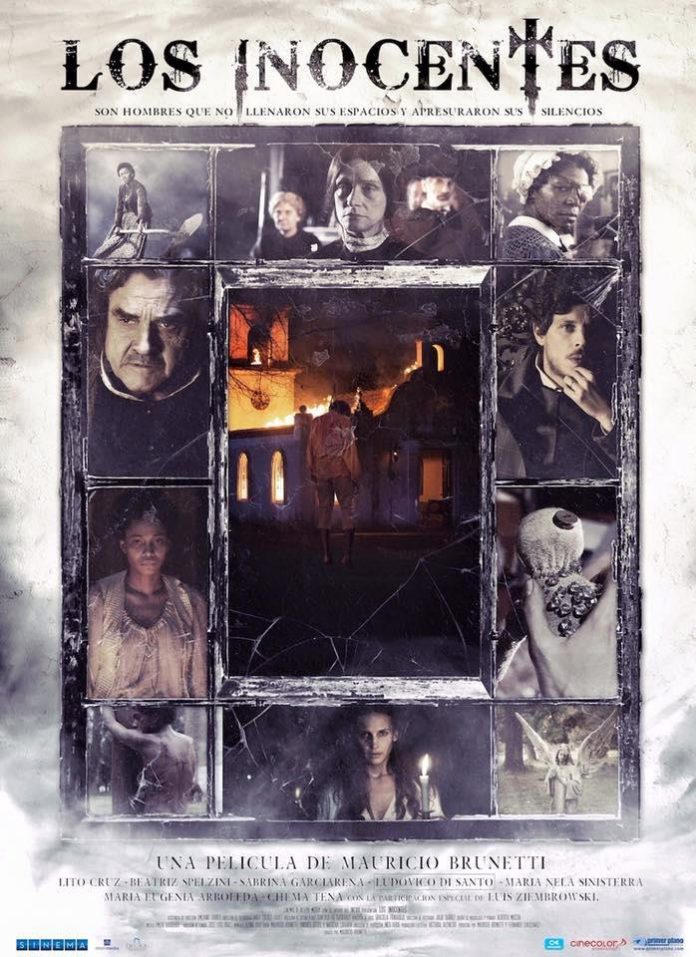
This Argentine period piece opens a fascinating window into 19th century race relations in the South American nation — which, based on its history of forced “whitewashing” of its populace, makes the US seem downright welcoming to black folks. It’s set on a plantation haunted by vengeful ghosts of the slaves who died there, but unlike Black Demons, we’re supposed to actually root for them because the slave owners are bona fide garbage.
34. The Devil Lives Here (AKA The Fostering) (2016)
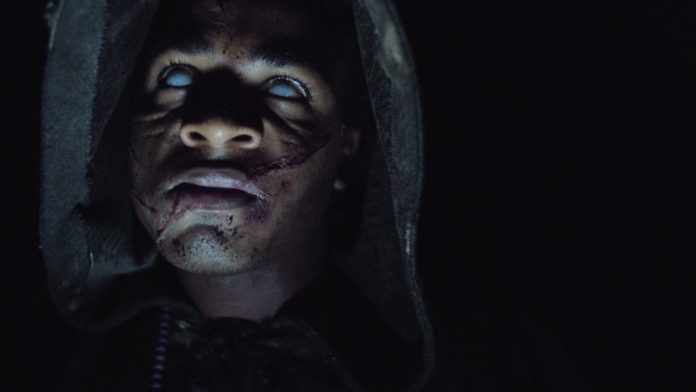
This engaging Brazilian tale is part Candyman, part Beloved and part Evil Dead, as four white (or whatever light-skinned designation is appropriate in Brazil’s notoriously schismed social structure) adolescents in a remote farmhouse mess around and conjure the spirit of a slave’s murdered baby, unwittingly unleashing a horror born of slavery. They think they’re doing the right thing by freeing the spirit, but this is a horror movie, so of course they’re dead wrong. Only the descendants of the slaves who died there realize the full extent of the danger that the baby’s resting place presents, and a pair of them who serve as guardians of the location must come to the rescue of the well-meaning but blissfully ignorant white teens.
35. Urban Cannibal Massacre (AKA Meat the Jones) (2016)
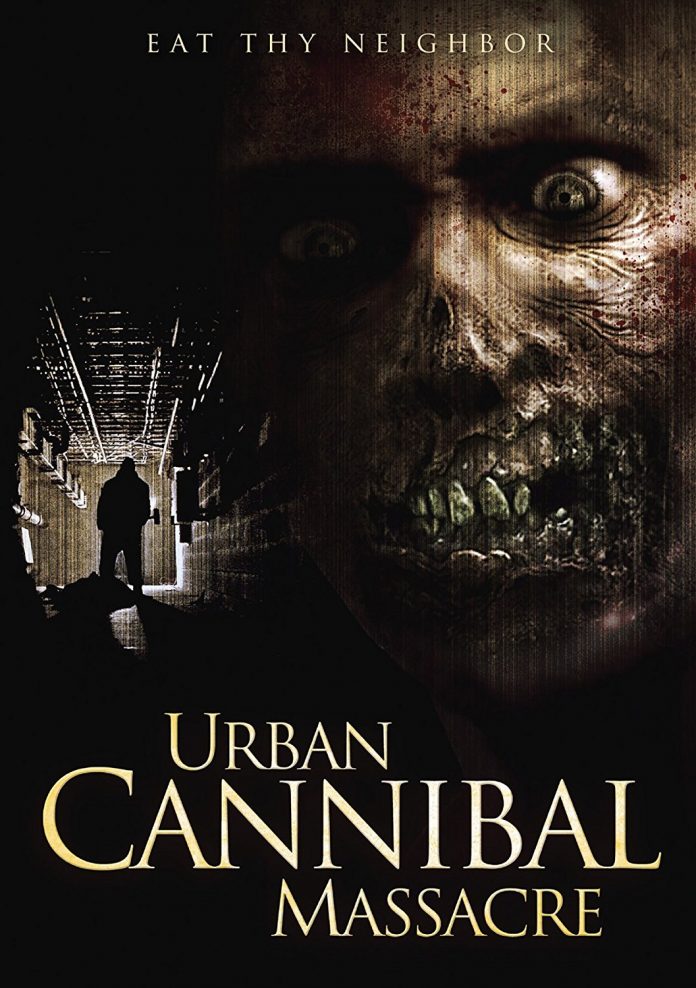
It’s time for some equal-opportunity murder, don’t you think? As the “urban” in its title indicates, Urban Cannibal Massacre features a family of black cannibals, but here’s the kicker: they only eat white people! Are they racist for targeting whites or, like that Key & Peele zombie skit, are they racist for NOT targeting blacks?
36. Coleville (2017)
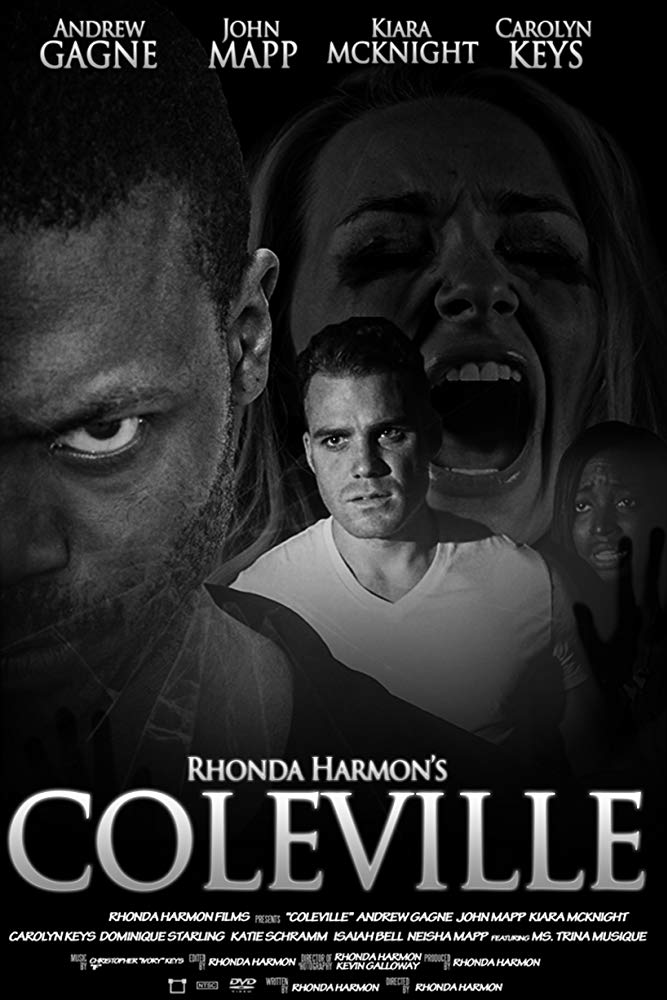
Like Urban Cannibal Massacre, this is a dirt-cheap production featuring black villains targeting white people, but luckily, they’re both from black filmmakers, so there’s no need to call Al Sharpton. Coleville is a Twilight Zone-ish tale about a town lorded over by a black drug kingpin who kidnaps and enslaves white people to work on his marijuana plantation. Plus, there are Caucasian-eating aliens involved for some reason.
37. Get Out (2017)
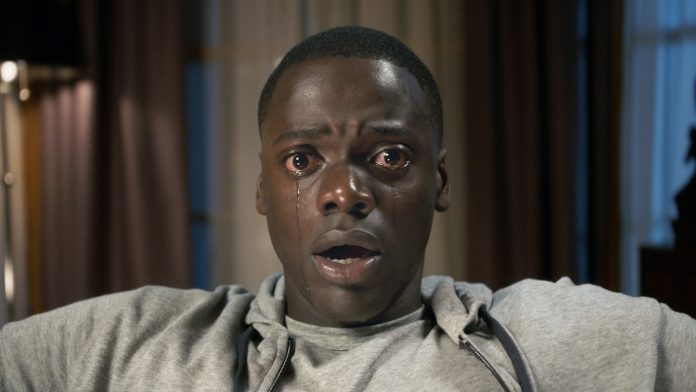
A brilliant blend of horror and social satire, Jordan Peele’s Get Out explores race relations not from the typical angle of overt, cross-burning racism, but rather from a level of admiration that devolves into deranged fetishism. It begins with a Guess Who’s Coming to Dinner scenario in which a white woman brings her new black beau home to meet her parents, but rather than have reservations about the interracial relationship, her folks embrace it…a little TOO much. They reflect an element of society obsessed with racial “otherness” and the belief that there’s something inherently cooler or more athletic or more sexually potent about being black. And they want it, by any means necessary.
38. Fatima’s Revenge (2018)
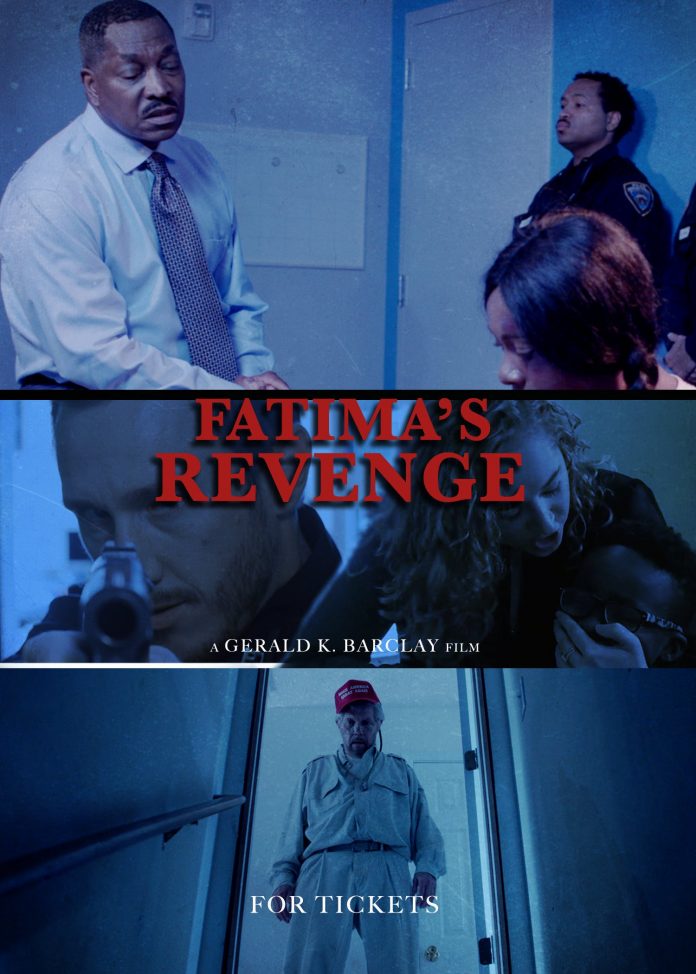
This indie thriller tackles the Trump era head-on in the story of a undocumented Liberian woman hired as a caretaker for an elderly white veteran who turns out to be a raging, MAGA hat-wearing racist, sadist and serial killer (not necessarily in that order).
39. Ma (2019)
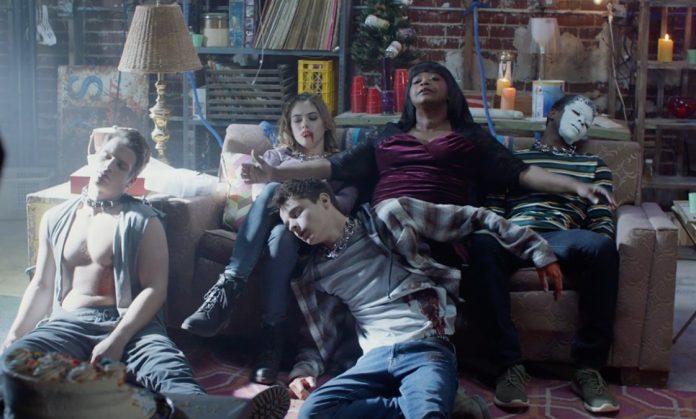
This juicy psycho thriller is a fascinating case study that delves into the cultural subtleties of race and difference. Octavia Spencer plays Sue Ann, a lonely, middle-aged woman who connects with a group of high schoolers who use her home as a safe place to party. They make her feel young again, and unlike when she was their age, she feels like one of the (white) “cool kids,” but when she becomes too clingy — Single Black Female-style — and the teens start to pull away, she’ll do anything to keep the party going. In flashbacks to Sue Ann’s childhood, race is never mentioned as a reason for her ostracism, but late in the film, when she delivers the menacing threat “They’ve only got room for one of us” to the only black member of her party posse, it’s clear that she’s aware of the racial strata. Her descent into madness reflects the subtle, incremental indignities of being a racial outsider and the toll it can take on one’s psyche.
40. Body Cam (2020)
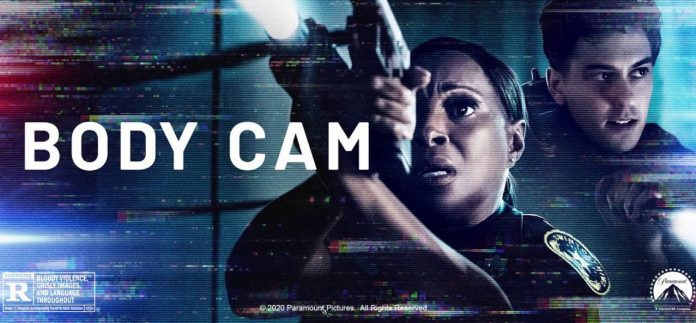
This timely film stars Mary J. Blige as a cop who must not only overcome the animosity from her community generated from police abuse cases that seem to disproportionately affect black citizens, but also solve a string of attacks on her colleagues that appear to be supernatural in origin.

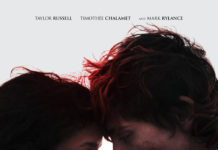
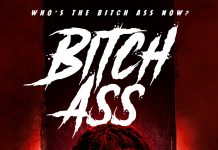

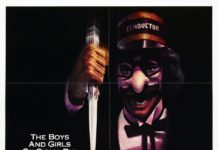
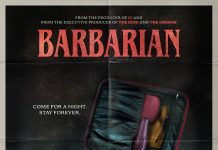
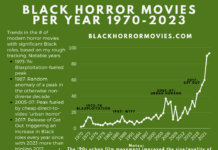
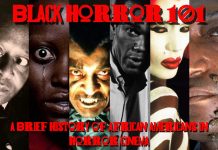
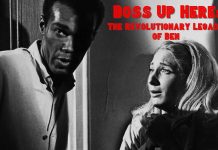
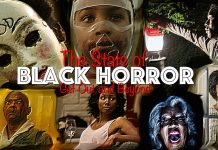
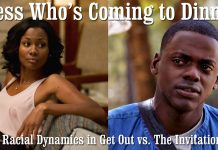
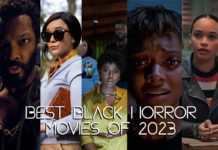
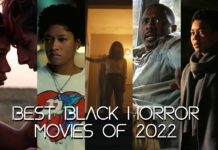



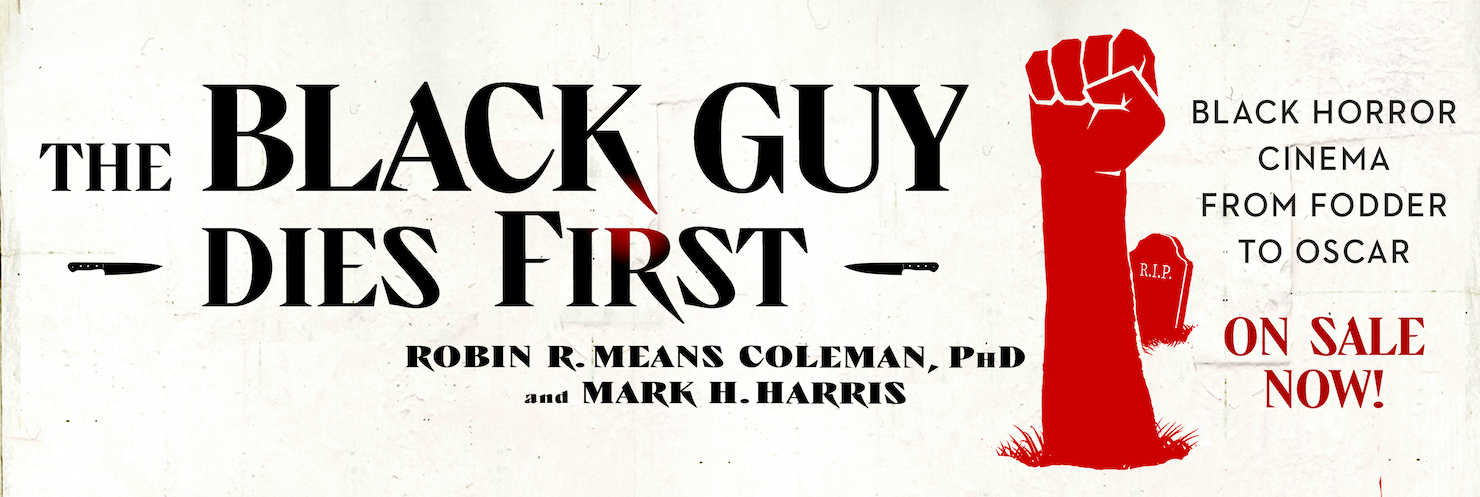

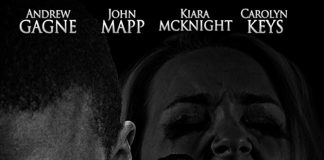
I always associated Kong with the tragedy of slavery. Taken against his will from his home and exploited and, when he escapes and rightfully attacks his captors, he is killed.